In the guide
Although the United Kingdom left the European Union (EU) in 2021, certain pieces of legislation (known as 'assimilated law') continue to apply until such time as they are replaced by new UK legislation, revoked or permitted to expire. This means that our guidance still contains references to legislation that originated from the EU.
In this guide, the words 'must' or 'must not' are used where there is a legal requirement to do (or not do) something. The word 'should' is used where there is established legal guidance or best practice that is likely to help you avoid breaking the law.
This guidance is for England, Scotland and Wales
This guidance focuses on products that look like or imitate food but are not food. It is an offence to provide products that look like food and can cause injury or a health risk because of this.
Laws covering food-imitating products
A number of laws prevent the sale of potentially dangerous food-imitating products:
- Food Imitations (Safety) Regulations 1989
- assimilated Regulation (EC) No 1272/2008 on classification, labelling and packaging of substances and mixtures
- assimilated Regulation (EC) No 1223/2009 on cosmetic products (enforced by Trading Standards in the UK by the Cosmetic Product Enforcement Regulations 2013)
Food Imitations (Safety) Regulations 1989
These Regulations prohibit the marketing, import and manufacture of products that look like foodstuffs but are not, in fact, edible. In particular, they prohibit the supply of goods that have one or more of the following in such a manner that people, particularly children, could confuse them with food and put them in their mouth, and suck or swallow, which may cause death or injury:
- form
- odour
- colour
- appearance
- packaging
- labelling
- volume
Injury can include choking, strangulation, cutting, poisoning, or even causing a child to vomit.
Assimilated Regulation (EC) No 1272/2008 on classification, labelling and packaging of substances and mixtures
Under this Regulation, dangerous preparations such as detergents, drain and oven cleaners, glues, polishes, etc must not be supplied in a shape that:
- attracts the active curiosity of children
- misleads consumers
- looks like packaging for:
- food (for animals or humans)
- medicines
- cosmetics
Assimilated Regulation (EC) No 1223/2009 on cosmetic products
This Regulation states that a cosmetic product must be safe for human health when used under normal or reasonably foreseeable conditions of use, taking account, in particular, of the following, which should not endanger the health and safety of consumers due to confusion with foodstuffs:
- presentation (and in particular its form, odour, colour, appearance, packaging)
- labelling
- volume
- size
How to assess whether a product is safe
In order to assess whether a product can cause injury or a risk to health, any appropriate designated standards* could be used. For example, the EN 71 series of standards covers the safety properties of toys and would be suitable to assess, for example, whether a food imitation releases a small part that could cause a choking hazard or contains a prohibited chemical such as lead or cadmium.
[*'Designated standards' are those approved by the Secretary of State and published by the British Standards Institution (BSI).]
The following are examples of products that have been deemed to be food imitating and could cause injury or harm to health.
| Relevant standard(s) | Product | Hazards and examination points | |
|---|---|---|---|
| BS EN 71-1: Safety of toys. Mechanical and physical properties BS EN 71-3: Safety of toys. Migration of certain elements |
Wooden apple | 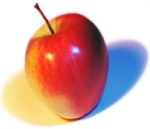 |
Choking hazard Toxicity - paints |
| BS EN 71-1: Safety of toys. Mechanical and physical properties | Candle | 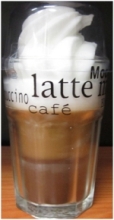 |
Choking hazard |
| BS EN 71-1: Safety of toys. Mechanical and physical properties BS EN 71-3: Safety of toys. Migration of certain elements |
Christmas decoration - polystyrene lollipop | 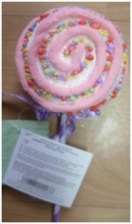 |
Choking hazard |
| BS EN 71-1: Safety of toys. Mechanical and physical properties | Decorative 'I Love Chocolate' magnets | 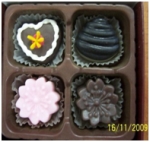 |
Choking hazard Magnets are easily detached and, because they attract each other, can cause serious damage when passing through the intestine (blockages, perforation of the intestine) |
| BS EN 71-3: Safety of toys. Migration of certain elements | Naphthalene moth balls | 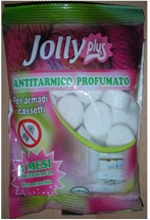 |
Naphthalene may cause irritation, burning and poisoning |
| BS EN 71-1: Safety of toys. Mechanical and physical properties | Decorative candle | 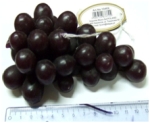 |
Choking hazard Grapes break off |
| BS EN 71-3: Safety of toys. Migration of certain elements | Cooling element resembling ice cube bags. The translucent cubes contain distilled water and ethylene glycol | 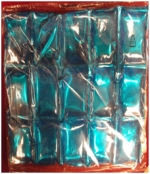 |
The product poses a chemical risk because the liquid contains ethylene glycol, which can be toxic if swallowed |
| BS EN 71-1: Safety of toys. Mechanical and physical properties | Decorative candles | 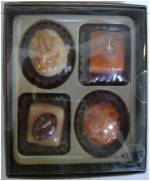 |
Choking hazard |
| BS EN 71-1: Safety of toys. Mechanical and physical properties BS EN 71-3: Safety of toys. Migration of certain elements |
Christmas decoration in the form of a cupcake made of expanded polystyrene | 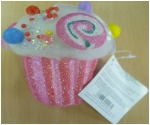 |
Choking hazard |
| BS EN 71-1: Safety of toys. Mechanical and physical properties BS EN 71-3: Safety of toys. Migration of certain elements |
Decorative candle in the shape of a chocolate cake topped with cream and blackberries, packaged in a box with a cardboard base and a clear plastic cover, tied around with a brown ribbon |  |
Choking hazard |
| BS EN 71-3: Safety of toys. Migration of certain elements | Shower and bath gel, wild strawberries | 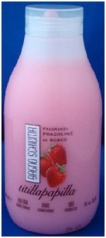 |
Product's detergent content represents a serious health risk (toxic pneumonia) |
| BS EN 71-1: Safety of toys. Mechanical and physical properties | Lip glosses packed in plastic mini pots in the form of little tarts (chocolate and strawberry sprinkle, cherry feast, violet fancy, etc) | 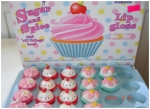 |
Choking hazard |
| BS EN 71-1: Safety of toys. Mechanical and physical properties | Two fragrant novelty soaps, in the shape of a cake slice, in plastic wrapping | 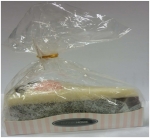 |
Choking hazard |
Trading Standards
For more information on the work of Trading Standards services - and the possible consequences of not abiding by the law - please see 'Trading Standards: powers, enforcement and penalties'.
Back to topIn this update
No major changes.
Last reviewed / updated: February 2025
Back to topKey legislation
- Food Imitations (Safety) Regulations 1989
- assimilated Regulation (EC) No 1272/2008 on classification, labelling and packaging of substances and mixtures
- assimilated Regulation (EC) No 1223/2009 on cosmetic products
- Cosmetic Product Enforcement Regulations 2013
Please note
This information is intended for guidance; only the courts can give an authoritative interpretation of the law.
The guide's 'Key legislation' links go to the legislation.gov.uk website. The site usually updates the legislation to include any amendments made to it. However, this is not always the case. Information on all changes made to legislation can be found by following the above links and clicking on the 'More Resources' tab.

